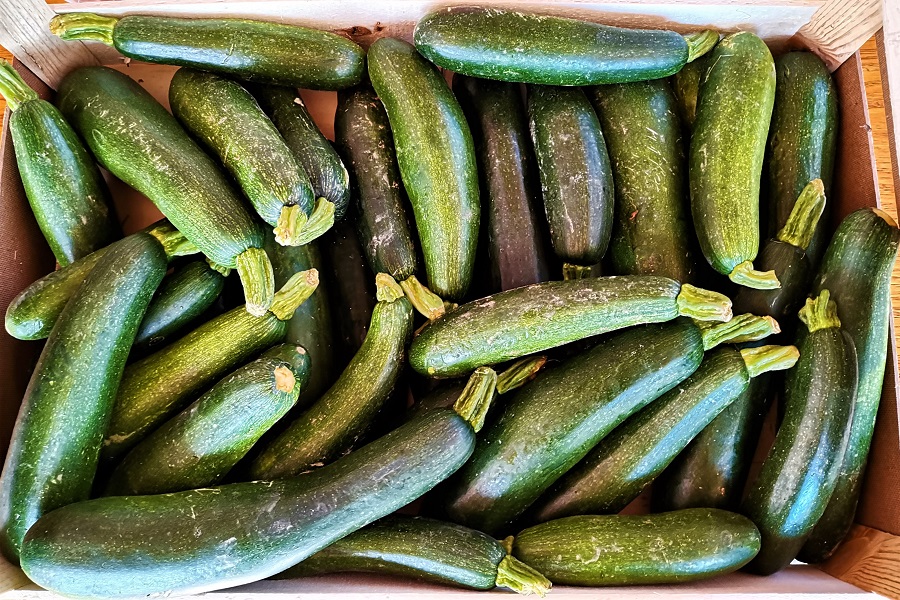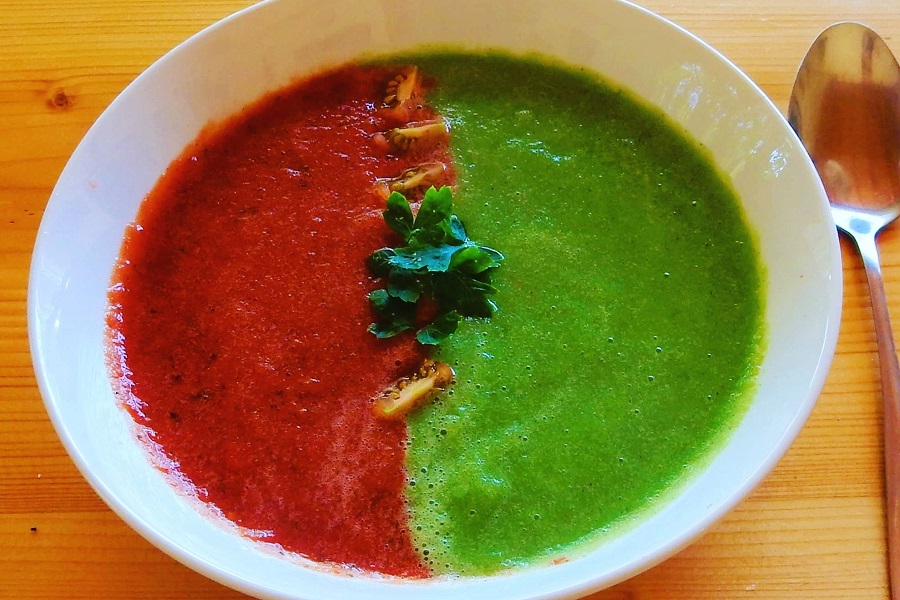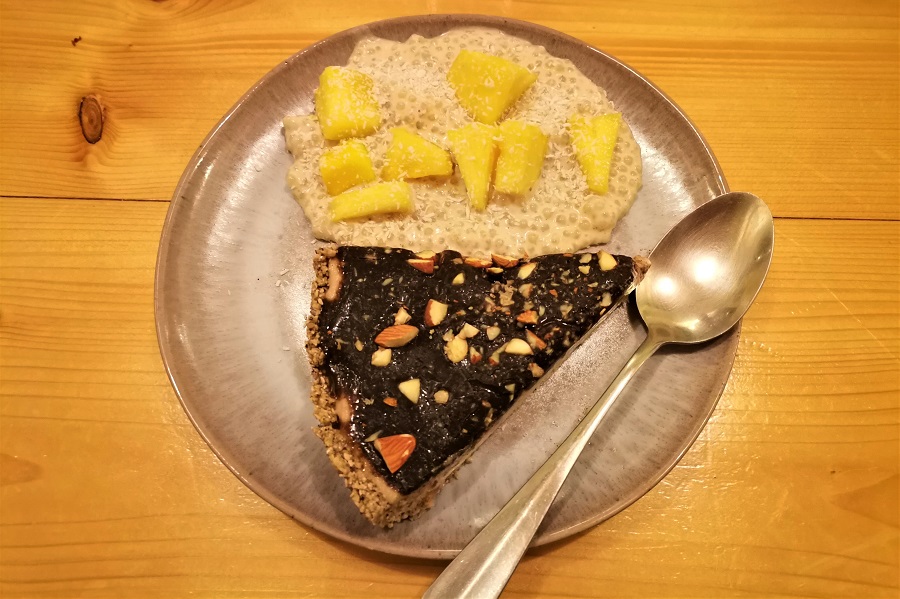One of the issues with counting calories is the assumption that a calorie is a calorie, no matter what the source. Biochemically, a calorie is a calorie, but in real life we must also consider the calorie density of the food. The calorie density of a food gives you the amount of calories in a given weight of food. Some foods have more calories per gram, pound, or stomach full than others.
There is up to 40 times difference the calorie density of foods. Non-starchy vegetables contain on average 100 calories per pound, and oils and fats contain 4000 calories per pound. Of course, no one would eat a pound of oil, but one tablespoon of oil already contains 120 calories. For those same 120 calories you could eat 750 grams of Zucchini. To get 2000 calories you would have to eat 12,5 kilos of zucchini or have one cup of olive oil.

The calorie density shows you that it becomes pretty much impossible to overeat on foods that are low in calorie density. People tend to eat the same amount of food weight wise daily, around 1,5 kilos of food. Thus, if your overall caloric density of your diet hovers around 700 calories per pound, you would eat 2000 calories, the recommended daily intake for women.
Another way to look at the calorie density is to see how often you can fill up your stomach to get 2000 calories. On average, a stomach can expand to fit about 4 cups of food. You could fill up your stomach 13 times with 2000 calories of zucchini, which would leave you eating pretty much all day. You could fill up your stomach with ice cream once and get your daily 2000 calories. Or have an apple, which contain around 60 calories per cup (118 gram). To get 2000 calories from apples you should eat 33 cups, which fills up your stomach more than 8 times. An apple is low in calorie density because an apple is 85% water by weight, 20% air by volume, and is a source of dietary fibre which doesn´t add any calories.
Physically filling up your stomach is a big factor that leads to appetite satisfaction. When the stomach gets stretched, signals are given off that give us a feeling of satiety. Satiety is a physical feeling of being full and satisfied, the opposite of being hungry. Thus, of foods with a higher calorie density you tend to eat more before feeling satiated.
The calorie density of a food does not necessarily tell you if a food is healthy or not. However, the low-calorie density foods are all healthy plant-based foods. Non-starchy vegetables are the lowest in calorie density which average around 100 calories per pound. Fruit contains on average around 300 calories per pound, starches 500 calories per pound, and the legumes 600 calories per pound.
At the other extreme we have pure fats like oil that are so dense in calories that you could exceed your daily 2000 calories by filling up your stomach only a quarter of the way once. Refined grains are much denser in calories than the unrefined grains. In the process of refining the grains they get stripped from their water content, dietary fibre, and nutrients. The calorie density almost triples and the nutrient value decreases up to 80%. Wholegrain pasta is a processed food that is an exception to this, because when you cook pasta, it absorbs lots of water, which has a calorie density of zero and thus brings the overall calorie density down.
The avocado, nuts and seeds are the exceptions in the whole food category. An avocado contains 750 calories per pound and nuts and seeds have 2800 calories per pound. These healthy foods are high in fat, which adds lots of calories. They are best enjoyed in moderation and when you want to lose weight it is best to minimize these foods. When you consume nuts and seeds in their whole form, not all the calories from the nuts and seeds are absorbed by the body and these calories we lose with our stool.
High-calorie density dessert
Traditional diets tended to focus on decreasing portion sizes, which we know leave you hungry and unsatisfied, but it might be better to shift the emphasis from restriction to healthier low-calorie density eating. For sustained weight loss you need to have a caloric deficit 300 to 500 calories a day. Because, when you lose weight your basal metabolic rate also decreases, its estimated that for each kilo of body weight you lose, your BMR drops 15 calories per day. Losing weight is also accompanied by an increase in appetite, by taking these things into account, we need to have this daily caloric deficit of 300 to 500 calories. Which is best achieved by decreasing the caloric density of your diet instead of the portion sizes.
Working with the calorie density is an easy way to eat. When you add vegetables to your meal, the calorie density goes down. And when you add oils to your meal, the calorie density shoots up. Meals which contain lots of water like a soup are also low in calorie density and will fill you up. It’s also a sustainable way of eating because it gives a feeling of satiety and provides lots of nutrients, by consuming fewer overall calories.
When you start your meals with the lowest calorie density foods, like for example a salad without the oily dressing, or a soup which consists of lots of water, you tend to eat less overall. There have been studies that showed that when you start your meal with a 100-calorie salad, you tend to eat 200 calories less with that meal, because the salad fills up your stomach. So, in effect the salad as a starter adds a negative 100 calories to your meal.
Another added benefit of the low-calorie density foods is that they tend to be the most nutrient dense foods as well. Fruits and vegetables are a biggest source of vitamins, minerals, antioxidants and other beneficial phytonutrients in the diet.






